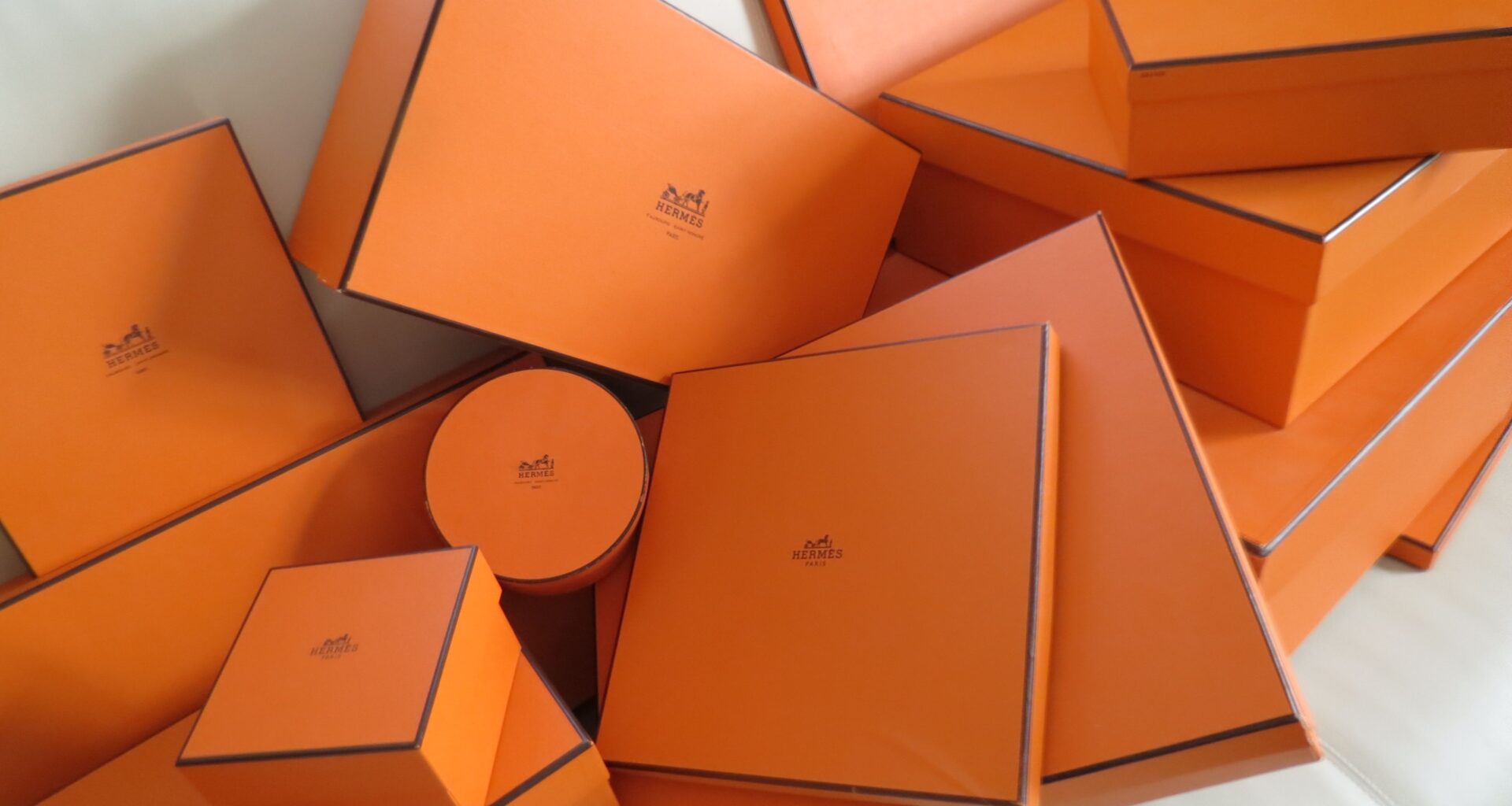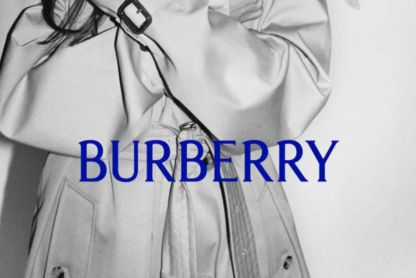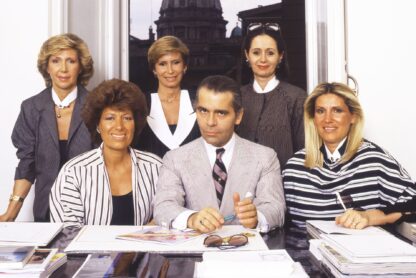Hermès was founded in 1837 by Thierry Hermès (1801 – 1878) who opened his first shop in rue Basse-du-Rempart in Paris. From its early exposure to leather production, crafting high-quality harnesses and saddles for the elite equestrian community, to the creation of the first men’s ready-to-wear garment, a golf jacket (1925), to release of iconic products including the Kelly bag in the 1930s, the Hermès scarf (1937), and the famous Birkin bag (1984), Hermès has seen an impressive evolution since almost two centuries in the family business led by six generations of artisans.
Today, we want to talk with you about the history of a special color and item that is a central part of the French luxury house: The Hermès orange box.
The History Of The Hermès Orange Box
Why is the Hermès Box Orange And When Was It Invented?
Did you know that the boxes of Hermès were not always orange? However, it has been the brand’s signature color for years. The luxury house adopted it purely by accident.
Originally, if we go back to the 1920s, Hermès packaging was designed in a cream shade to resemble a pigskin. It has gold edging and logo. In the mid-1930s, it was changed to mustard yellow with dark chocolate brown edging and logo.
However, during the Second World War, there was a shortage of cream-colored and mustard cardboard boxes. So Hermès couldn’t use these colors anymore. The brand’s usual supplier had orange boxes available though. Since it was a color that no one wanted, Hermès agreed to use it to be able to keep delivering its products.
Emile-Maurice Hermès, the grandson of the founder Thierry Hermès, added a brown ribbon and a horse-drawn eye logo to the box. It serves as the perfect finishing touch to the packaging and delivery of the luxury house’s leather goods.
Hermès Orange Shades
Since the house first adopted the orange color, it has had some variations in its shades. Still, it remained the same after the 1960s.
Hermès also uses other varieties of orange. These colors include Potiron, Cornaline, Terre Battue, Crevette, Orange Poppy, Moutarde, Capucine, Sanguine, and Hermès Feu, among others.
Which Color Code Is The Hermès Orange Box?
The Hermès orange box bears the color code 93. It is so unique that there is no Pantone color equivalent to Hermès orange!
Hermès has registered trademarks for this color all over the world. In 2005, the European Union Intellectual Property Office refused to register it as a trademark. They said that the orange is too common a color to be associated with a single brand. They added that consumers do not identify a brand by color. Therefore, registering it would mean granting an unjustified monopoly to Hermès. Despite the brand filing more appeals over the years, they were rejected, and at the moment, the legal battle is still ongoing.
Despite some failed trademark registrations, the Hermès orange color is undoubtedly recognizable and it’s one of the first things that comes to mind when one hears the name of Hermès. Indeed, when it comes to signature elements of a fashion house, colors play an equally important part next to top fashion products in shaping the brand’s image and preserving its heritage. The Hermès orange is so rare and popular that the brand even won an Oscar for the packaging in 1994!
Hermès Orange Box Sizes
There are about 188 different sizes of Hermès orange boxes. Everything the house offers, from luxury Hermès bags to silk scarves to ties, hats, boots, tableware, and jewelry, comes in round, rectangular, or square boxes. Only the furniture is too large to fit inside the box.
What Material Is The Hermès Orange Box Made From?
Another interesting fact about the iconic orange box is its quality. The cardboard is made by manufacturers in France and Italy from 100% eco-friendly materials and non-polluting water-based ink for lettering. The tissue paper that lines the box and the orange bag that carries it is made solely from sustainably managed forests and earns the FSC (Forest Stewardship Council) certification.
What started as a packaging by default became a symbol of the French house, the color nodding to its equestrian roots, and one of the most recognizable colors in the fashion industry. Hermès succeeded at transforming a basic shade in the color palette into a powerful brand identifier that brings a sense of luxury and exclusiveness to its packaging and products.
Is there anything else you would like to learn about Hermès? Follow me on Instagram for more updates!









